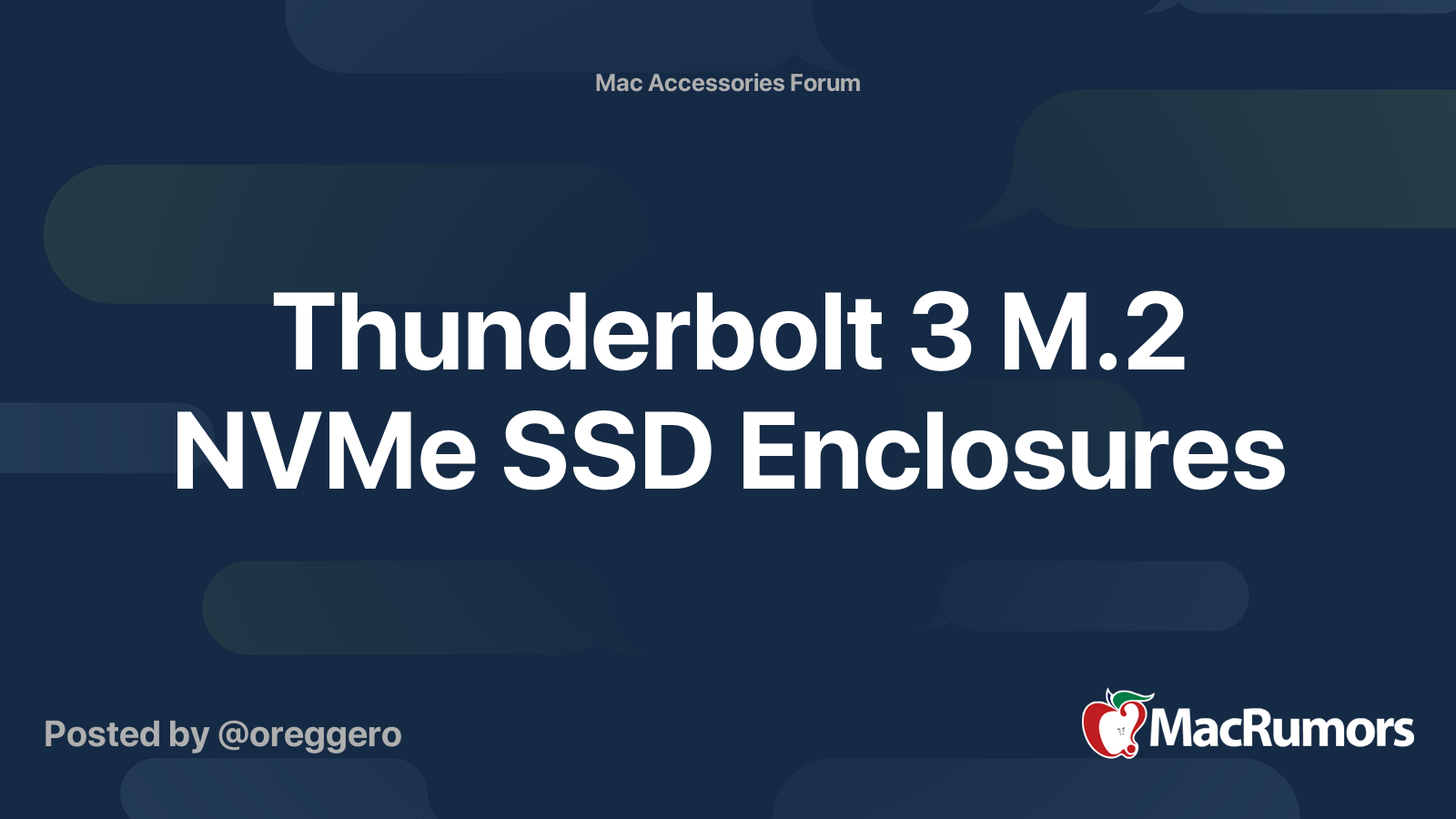@Alameda,
You - along with several others here at MacRumors - are a WEALTH OF KNOWLEDGE!!!
Let me clarify...
Right now I have like 1.9TB (out of 2TB) on my 2015 rMBP.
I do have a lot of video on my laptop, BUT I am not shooting or editing it.
I try to watch at least 1-2 hours of videos off of YouTube every night before bed. When I see a video description that looks interesting, I just download it to my laptop using 4K video downloader. Over just the last year, I have build a massive library of thousands of videos includng How-To tech videos, plus a lot of things from the news.)
But my video library is only maybe 800GB right now.
I have like 700 GB of PDF'ed news articles on my laptop.
And I have like 400GB of unrendered audio files - that I need to get to - on my laptop.
Plus all of my spreadsheets and what-not.
I do a lot of "research" for my startup business, and I save EVERYTHING - screenshots, video capture, video downloads, audio capture, and so on.
I can **easily** fill up another 2TB of storage on a new laptop in the next 2-3 years.
What software are you using to get these speed gauges?
And how much does that cost?
You know, a couple of years ago I thought the people at B&H Photo were "gods" with all of their knowledge.
Now, I regularly find that not only do a lot of B&H employees know less than I do, but they lack "real world" knowledge, and often give bad advice - like the Samsung T7 (USB) drive.
Looks like all of those YouTube videos I download and watch every night are helping me out! (That and the fact that so many people here are MacRumors are DEFINITELY GENIUSES!!!)
Glad that I came here to ask for advice before taking the advice of the B&H employee I was chatting with recently.
(The last thing I want to do is drop $5,000+ on a powerful new MacBook Pro and then not know how to use it, and not know how to push it to it's limits!)
Thanks for saving me from making a BIG MISTAKE on purchasing that first drive!!
Makes sense.
What about people who claim they filled up 4TB of space editing a video?
Are those ProRes and RAW shooters talking?
How much of a "work space" seems reasonable to you? (I would hope that 1-2 TB of free internal space is more than enough for most video-editors?)
No secrets here, and I don't mind you asking.
I just have a massive repository of data and knowledge that I like to have at my fingertips for research. (Last year I ran out of space, saved a whole directly to an external drive and stashed it away in storage, and then one day I was in a bind and needed that data, and couldn't access it.
Sure, I am long overdo to do some "Spring cleaning" on my MacBook Pro, but even if I did that, I still use a lot more storage than your average user does.
Either way, as
@Ben J. said,
"Besides, IMO gear should be used, and even pushed to its limits. What's the point of buying new fancy gear if you're not going to take full advantage of it?"
FWIW, once I launch my business, and things settle down I probably can do a better job of saying, "I may need this data at any given time, so always have it on my laptop. While this data I rarely use, and it will be fine in storage."
Until then, most of what I have on this old MBP I am typing on, I use in fairly regularly.
My startup is built on content. More specifically, based on research and analysis.
To give you a sense, I save about 8,000 - 10,000 new articles a year. Along with that, I do lots of captures using SangIt and as mentioned downloading a lot of video and audio. So that adds up.
(I also take around 10,000 photos a year for my business, and shoot maybe 8TB of video a year - of course that IS stored on external drives.)
So where do I find those?
Presumably if I buy this drive,
SanDisk Professional 4TB PRO-G40 SSD Thunderbolt 3 Portable SSD, then the cable it comes with is sufficient, right?
Or do I need to buy a separate "ultra high-speed" cable on my own?
When I bought my iPhone 15 Pro Max last week - I think it comes today - I picke dup this cable from Apple:
Thunderbolt 4 (USB‑C) Pro Cable (1m) $69.00
Is that a good cable?
And how would it compare to the cable that comes with the SanDisk Professional 4TB PRO-G40?
Good advice!
On that point, so how do I know that I have the right cables?
Other than looking at the specs - and maybe coming here for advice - it seems like maybe I could use the software you used to post those fancy speedometer looking charts above, to test things out?
Yeah, the last thing I want to do is spend all of this money, and then not be using it properly, and not getting the full benefits!!
Any advice on how to avoid making dumb mistakes like that would be priceless!






